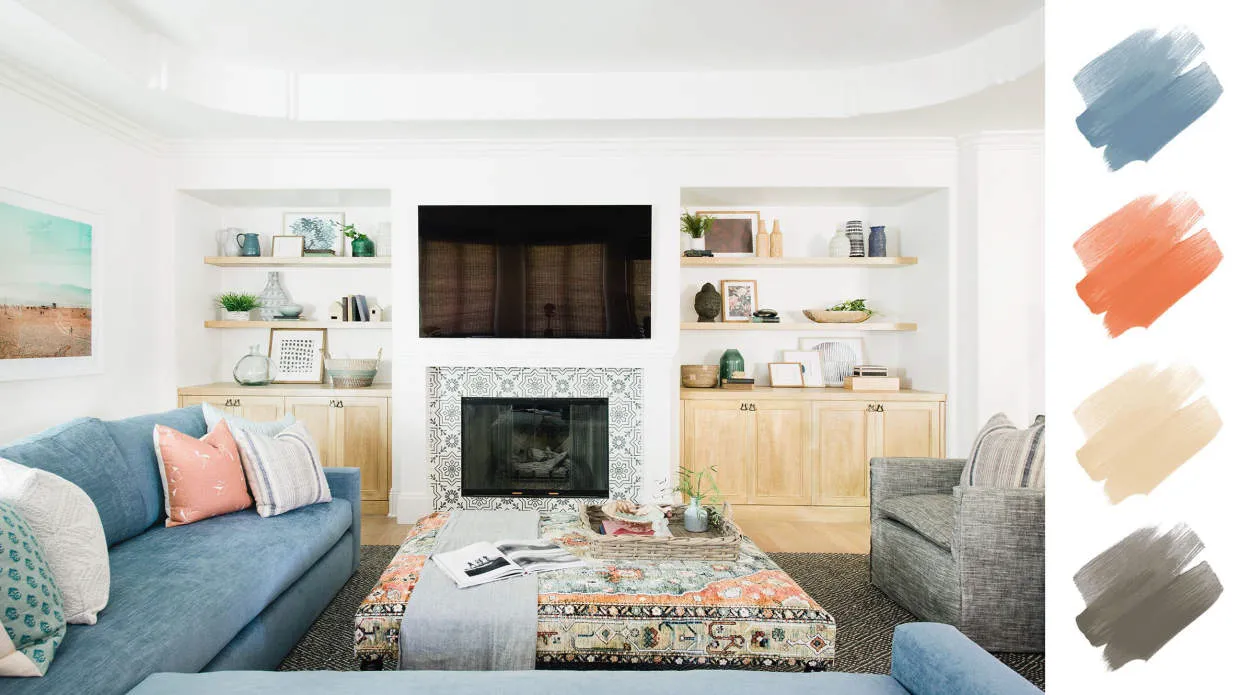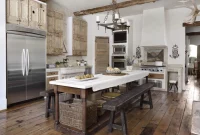Choosing the right color schemes for your living room can make a significant impact on the overall ambiance and style of your home. In this article, we will explore various tips and tricks for crafting the perfect palette that suits your personal taste and enhances the beauty of your living space.
Understanding Color Theory
In order to create the perfect color scheme for your living room, it is essential to have a good understanding of color theory. Color theory refers to the principles and guidelines that help us understand how colors work together and how they can evoke specific emotions or moods.
One important aspect of color theory is the color wheel, which provides a visual representation of how colors relate to each other. The color wheel consists of primary colors (red, blue, and yellow), secondary colors (orange, green, and purple), and tertiary colors (a combination of primary and secondary colors).
When choosing a color scheme for your living room, it is helpful to consider the different color relationships on the color wheel. Complementary colors, which are opposite each other on the color wheel (e.g., blue and orange), create a vibrant and visually striking effect when used together. Analogous colors, on the other hand, are next to each other on the color wheel (e.g., blue and green) and create a harmonious and cohesive look.
Another factor to consider is the concept of warm and cool colors. Warm colors, such as red, orange, and yellow, tend to create a cozy and inviting atmosphere, while cool colors, such as blue and green, can create a calming and soothing effect.
Furthermore, understanding the psychological effects of colors is crucial when designing your living room color scheme. For example, blue is often associated with tranquility and serenity, making it suitable for relaxation areas, while red can evoke energy and passion, making it more appropriate for social areas.
By combining your understanding of color theory with your personal preferences and the overall style of your living room, you can craft the perfect color palette that reflects your desired ambiance and creates a visually pleasing space.
Warm vs. Cool Tones
In the world of interior design, one of the key considerations when creating a cohesive and inviting space is choosing the right color scheme. When it comes to living room color schemes, the choice between warm and cool tones plays a crucial role. Understanding the characteristics and effects of each can help you craft the perfect palette for your living room.
Warm Tones
Warm tones, such as reds, oranges, and yellows, evoke a sense of coziness and energy. These colors are often associated with warmth, excitement, and vitality. Incorporating warm tones into your living room can create a welcoming and inviting atmosphere, perfect for gatherings and socializing.
When working with warm tones, you have various options. You can opt for a monochromatic palette, using different shades of a single warm color. Alternatively, you can create contrast by combining warm hues with complementary cool tones, adding a balance to your space.
Cool Tones
Cool tones, such as blues, greens, and purples, bring a sense of calmness and serenity to any space. These colors often promote relaxation and tranquility, making them ideal for creating a peaceful living room atmosphere.
Like warm tones, cool tones offer versatility in terms of color combinations. You can choose a monochromatic scheme using different shades of a single cool color, or you can experiment by mixing cool hues together to create a harmonious and soothing atmosphere.
The Perfect Palette
When deciding on the perfect living room color scheme, it’s important to consider your personal style and the mood you want to set. Warm tones are great for adding energy and vibrancy, while cool tones can create a calming and relaxing ambiance. You can even combine warm and cool tones for a balanced and visually appealing palette.
Remember, colors have the power to influence emotions and set the tone for a room. Experiment with different combinations, test paint swatches, and consider how the colors interact with the natural light in your living room. By carefully selecting warm and cool tones, you can craft an inviting and visually pleasing living room color scheme that reflects your taste and enhances your overall living experience.
Accent Colors
When it comes to crafting the perfect color scheme for your living room, incorporating accent colors can make a significant difference. Accent colors are those that are used sparingly to create visual interest and add a pop of excitement to the overall design. Whether you prefer bold and vibrant hues or subtle and muted tones, selecting the right accent colors can help enhance the style and personality of your living space.
Choosing the Right Accent Colors
Before diving into selecting accent colors, it’s essential to consider the existing color scheme of your living room. Take a look at the primary colors used and determine which shades would complement them. For example, if your living room has a neutral color palette dominated by shades of beige and gray, adding accents of bold red or royal blue can create a striking visual impact.
Another approach is to choose accent colors that are found in the accessories, artwork, or furniture pieces within the room. This way, you create a harmonious and cohesive look throughout the space. For instance, if you have a vibrant orange vase or a painting with hints of teal, incorporating those colors in small doses can tie the room together.
Placement and Proportions
When incorporating accent colors, it’s essential to consider their placement and proportions within the living room. By strategically placing pops of color, you can draw attention to specific areas or features. This can be achieved by adding accent pillows with vibrant patterns, a colorful rug, or even painting a single wall with a bold shade.
Remember to maintain a proper balance between accent colors and the primary color scheme to avoid overwhelming the space. In most cases, it’s ideal to keep the majority of the room in neutral or muted colors, while using accent colors as eye-catching accents.
Experiment and Have Fun
Lastly, don’t be afraid to experiment and have fun with accent colors. They provide an opportunity to inject your personality and style into the living room. Play with different color combinations, try out unique patterns, or mix and match contrasting shades. The key is to create a harmonious and visually appealing color palette that reflects your taste and creates a welcoming atmosphere in your living room.
Monochromatic Schemes
A monochromatic color scheme is an excellent choice for crafting the perfect palette in your living room. This scheme involves using various shades and tones of a single color to create a harmonious and sophisticated look.
One advantage of monochromatic schemes is that they provide a sense of unity and calmness to the space. By using different intensities of the same color, you can add depth and dimension to your living room.
When designing a monochromatic color scheme, start by selecting a base color that you love. Consider the mood and atmosphere you want to create in your living room. For a serene and tranquil environment, opt for blues or greens. If you prefer a warmer and cozier feel, earthy tones like browns or beiges might be the way to go.
To prevent your living room from looking flat or monotonous, incorporate various textures and materials. Experiment with different fabrics, such as velvet, linen, or leather, to add visual interest and tactile sensations.
Additionally, don’t shy away from introducing accent colors in small doses. These pops of color can be included through accessories like pillows, artwork, or decorative pieces. They will help break up the monotony while still maintaining the overall cohesive look.
Remember, achieving the perfect monochromatic color scheme requires careful balance. Pay attention to the proportions of each color within your living room. And most importantly, trust your instincts and have fun exploring the endless possibilities of monochromatic design!
Seasonal Color Changes
The choice of colors in your living room can have a significant impact on the overall ambiance and design. One way to keep your living room fresh and exciting is by incorporating seasonal color changes into your space.
In spring, embrace the vibrant and lively colors that signify renewal and growth. Opt for pastel shades such as pale greens, soft pinks, and light blues. These colors can bring a sense of freshness and rejuvenation to your living room.
As summer approaches, think about incorporating bright and energetic colors that evoke feelings of joy and vitality. Consider shades like sunny yellows, bold oranges, and tropical blues. These colors can create a lively atmosphere and enhance the summer vibe.
In the fall, transition your living room with warm and cozy colors. Choose rich earthy tones like deep reds, burnt oranges, and golden yellows. These colors can create a soothing and inviting ambiance, perfect for the autumn season.
As winter arrives, bring in cool and calming colors to create a serene atmosphere. Consider using icy blues, frosty whites, and silvery grays to evoke a sense of tranquility. These colors can make your living room feel cozy and peaceful during the colder months.
Remember, incorporating seasonal color changes doesn’t mean completely redecorating your living room. Instead, focus on smaller elements such as pillows, throws, rugs, and artwork that can be easily switched out to match the seasons.
By embracing seasonal color changes, you can transform your living room all year round and create a space that reflects the essence of each season.
Conclusion
In conclusion, choosing the right color scheme for your living room can greatly enhance the overall look and feel of the space. By carefully considering factors such as personal preferences, the size of the room, and the desired atmosphere, you can craft the perfect palette that reflects your style and creates a warm and inviting atmosphere for both yourself and your guests.




